The average cost of keeping a ewe in 2022, as reported through the Teagasc National Farm Survey (NFS) was €208. The same report shows that the average number of lambs reared per ewe joined to the ram, remains stubbornly low at 1.4 lambs. This means that, on average, the number of lambs produced is failing to cover the cost of keeping a ewe.
According to Michael Gottstein, Teagasc head of the sheep programme, a major barrier in improving ewe productivity is the lack of a defined breeding policy on a high percentage of farms. For example, it is not uncommon for a relatively small-sized flock to be running several breeds, all of which may be used in a random breeding mix.
Michael says that the starting point in developing a breeding policy is to establish the flock’s objectives:
What level of output do you wish to target? Are you planning to breed your own replacements?Are you open to changing breed type to achieve these objectives? Blank canvas
The advice for farmers is to sit down with a blank canvas and list the desired traits which they would like to see in their breeding programme, rather than focusing on breed. Michael points out that tradition should be forgotten about, as on many farms the strong association to a certain breed limits progress.
Where a farm is affixed to a certain breed, then there is still plenty of scope for improvement, with a bigger difference in predicted performance evident within breed than across breed.
“If we look at the difference within and across breed, the top-performing Scottish Blackface rams have a higher potential growth rate than the slowest-growing Suffolk rams, for example. The message is, choose your breed and then choose the best from within the breed.”
The gains that can be achieved in a breeding programme are cumulative and free after the initial investment in breeding has been made, but of equal importance where poor genetics are incorporated into a breeding programme, it can take upwards of 10 years to reverse these decisions.
Prolificacy
The trait that has probably the greatest potential in improving flock productivity is ewe prolificacy. As mentioned at the outset, there is massive potential to increase the number of lambs reared per ewe joined. Each extra lamb produced via an increase in litter size is potentially worth €70 to €140.
Many farmers use the argument of not wanting high numbers of triplet litters as a reason for not exploiting prolific genetics. Michael comments that this is a myth the sector needs to dispel.
“There is an idea that if you buy a Belclare ram you will have 30% to 40% triplets in the following year, and this is simply not true. Data from Seamus Hanrahan (retired Teagasc researcher) shows that going from a litter size of 1.4 lambs/ewe to 1.6 lambs/ewe will only increase from about three to four triplet-bearing ewes per 100 ewes, to seven to eight triplet-bearing ewes (4% to 5% increase).
“It generally takes five to six years to increase litter size by 0.2 lambs/ewe joined if doing it from a breeding point of view, so there is little to worry about. Incidentally, a lot of farmers that have [a high percentage of] triplets have set their system up gradually to deal with the higher numbers and are achieving good results.”
Mortality
Another area which has a significant effect on farm output is lamb mortality. There is a strong genetic link to lamb mortality, with traits such as lambing ease, lamb vigour and mothering ability all having an influence.
In highlighting the potential gains that can be achieved, Michael outlines that there have been rams used on the Teagasc BETTER farm sheep programme monitor farms that have recorded 4% mortality from one ram and 20% from another, despite environmental conditions being exactly the same.
A focus on growth rate and carcase conformation often overshadows a focus on prolificacy and mortality. While these traits can be beneficial, they have a much lower economic benefit than increasing prolificacy from a low base, or reducing mortality.
Michael says that having lambs present on the farm for another week typically costs €1.50/lamb/week, while increasing conformation score only significantly benefits a small percentage of lambs, with 90% paid on a flat R/U price.
This is not to say that lamb growth rate and conformation are not important, rather that there should be a balance in breeding decisions.
“It is no use how good lambs are or how quick they grow if you have a load of dead lambs in a bag that you won’t get paid for.
“Most farmers are selling lambs in the second half of the season, when lamb prices are flat. This is another myth that needs to be dispelled, that selling lambs early results in a higher lamb price.
“If we look at lamb prices for the last 10 years, it is worth more to have another lamb to sell than selling lambs a week earlier when there is no price premium.”
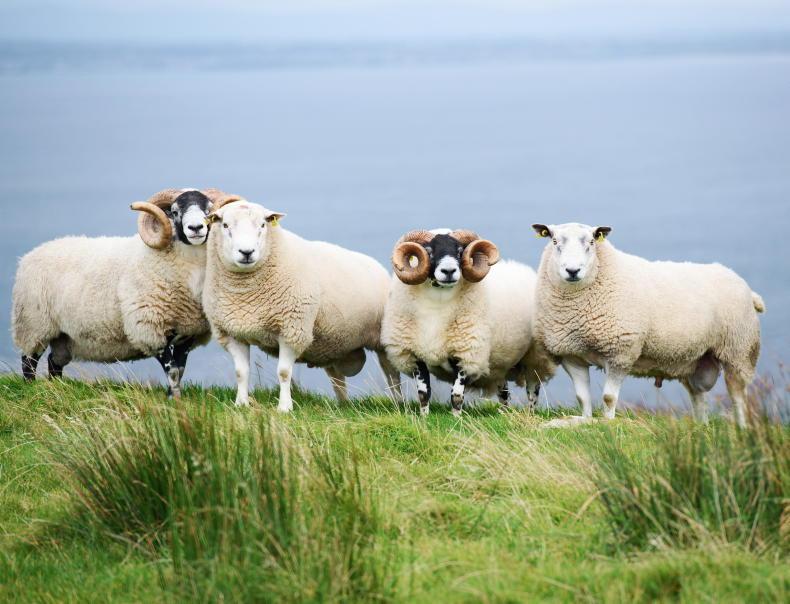
There is as much variation within breeds as across breeds, and this should be considered when developing the flock's breeding programme. \ Clive Wasson
Genetic evaluations
Within the region of 50% of data feeding in to genetic evaluations from commercial farms, there is now much more confidence in selecting rams based on a combination of physical attributes and genetic evaluations. The replacement and terminal index encompass a growing number of traits.
Many of these are also captured in four sub-indexes – number of lambs born, daughter milk, survivability and days to slaughter.
Additional traits, which can be viewed, include barrenness, lambing difficulty (% difficult), lamb vigour (% vigourous), ewe mothering ability, ewe lameness, lamb lameness, daginess (% dirty), ewe mature weight, carcase conformation, carcase fat and ewe methane. The latter trait of ewe methane is a new addition and stars for this trait will be available in 2024.
These traits should not be assessed in isolation, but they can be used to provide greater insight into a particular area. For example, if looking at mature weight, the aim is to reduce the mature size of ewes while still holding the ability to produce fast-growing lambs that will reach slaughter quickly.
The health traits are useful traits when it comes to targeting reduced labour and lower mortality, as is lamb survivability. Michael advises that where comparing sheep within breed to use the star rating of the animal, while when comparing sheep across breed – then the replacement and terminal numerical figure should be used.
A detailed report on understanding traits used by Sheep Ireland and their weighting in the indexes can be found at https://www.sheep.ie/wp-content/uploads/2022/11/Sheep-Ireland-traits-and-descriptions.pdf.
Cross-breeding
Cross-breeding is highlighted as an essential tool in commercial flocks, to exploit the benefits of hybrid vigour. The advice given by Michael is to choose traits wisely – ie replacement versus terminal.
Breed should ideally be selected that will give additional benefits to progeny from the breed mix.
For example, mating a ram with superior terminal genetics with ewes with good maternal traits, where lambs are destined for slaughter, will on average produce lambs which are more suited to finishing. On average, the breeding value of offspring will be better than the mean of both parents.
Cross-breeding is particularly advantageous in hill sheep systems, whereby ewes not required to breed flock replacements can be used to produce progeny with strong maternal attributes for sale to lowland farms, or to produce lambs with increased performance potential for bringing through to slaughter.
Michael advises that the maximum number of breeds in such a breeding programme should be three.
Adding value
The overarching aim when developing or reviewing a farm’s breeding policy should be to look for ways of adding value. The farm’s breeding policy should be aligned to the farm’s resources and produce animals that can excel in the terrain in which they are run, and minimise direct costs. There is potential irrespective of the target market to bring about positive changes, be it breeding for niche markets, easier-care sheep or increased output.
Michael concludes that having a breeding policy is one part of the jigsaw, with record-keeping or performance recording being the other important components to track progress.
The average cost of keeping a ewe in 2022, as reported through the Teagasc National Farm Survey (NFS) was €208. The same report shows that the average number of lambs reared per ewe joined to the ram, remains stubbornly low at 1.4 lambs. This means that, on average, the number of lambs produced is failing to cover the cost of keeping a ewe.
According to Michael Gottstein, Teagasc head of the sheep programme, a major barrier in improving ewe productivity is the lack of a defined breeding policy on a high percentage of farms. For example, it is not uncommon for a relatively small-sized flock to be running several breeds, all of which may be used in a random breeding mix.
Michael says that the starting point in developing a breeding policy is to establish the flock’s objectives:
What level of output do you wish to target? Are you planning to breed your own replacements?Are you open to changing breed type to achieve these objectives? Blank canvas
The advice for farmers is to sit down with a blank canvas and list the desired traits which they would like to see in their breeding programme, rather than focusing on breed. Michael points out that tradition should be forgotten about, as on many farms the strong association to a certain breed limits progress.
Where a farm is affixed to a certain breed, then there is still plenty of scope for improvement, with a bigger difference in predicted performance evident within breed than across breed.
“If we look at the difference within and across breed, the top-performing Scottish Blackface rams have a higher potential growth rate than the slowest-growing Suffolk rams, for example. The message is, choose your breed and then choose the best from within the breed.”
The gains that can be achieved in a breeding programme are cumulative and free after the initial investment in breeding has been made, but of equal importance where poor genetics are incorporated into a breeding programme, it can take upwards of 10 years to reverse these decisions.
Prolificacy
The trait that has probably the greatest potential in improving flock productivity is ewe prolificacy. As mentioned at the outset, there is massive potential to increase the number of lambs reared per ewe joined. Each extra lamb produced via an increase in litter size is potentially worth €70 to €140.
Many farmers use the argument of not wanting high numbers of triplet litters as a reason for not exploiting prolific genetics. Michael comments that this is a myth the sector needs to dispel.
“There is an idea that if you buy a Belclare ram you will have 30% to 40% triplets in the following year, and this is simply not true. Data from Seamus Hanrahan (retired Teagasc researcher) shows that going from a litter size of 1.4 lambs/ewe to 1.6 lambs/ewe will only increase from about three to four triplet-bearing ewes per 100 ewes, to seven to eight triplet-bearing ewes (4% to 5% increase).
“It generally takes five to six years to increase litter size by 0.2 lambs/ewe joined if doing it from a breeding point of view, so there is little to worry about. Incidentally, a lot of farmers that have [a high percentage of] triplets have set their system up gradually to deal with the higher numbers and are achieving good results.”
Mortality
Another area which has a significant effect on farm output is lamb mortality. There is a strong genetic link to lamb mortality, with traits such as lambing ease, lamb vigour and mothering ability all having an influence.
In highlighting the potential gains that can be achieved, Michael outlines that there have been rams used on the Teagasc BETTER farm sheep programme monitor farms that have recorded 4% mortality from one ram and 20% from another, despite environmental conditions being exactly the same.
A focus on growth rate and carcase conformation often overshadows a focus on prolificacy and mortality. While these traits can be beneficial, they have a much lower economic benefit than increasing prolificacy from a low base, or reducing mortality.
Michael says that having lambs present on the farm for another week typically costs €1.50/lamb/week, while increasing conformation score only significantly benefits a small percentage of lambs, with 90% paid on a flat R/U price.
This is not to say that lamb growth rate and conformation are not important, rather that there should be a balance in breeding decisions.
“It is no use how good lambs are or how quick they grow if you have a load of dead lambs in a bag that you won’t get paid for.
“Most farmers are selling lambs in the second half of the season, when lamb prices are flat. This is another myth that needs to be dispelled, that selling lambs early results in a higher lamb price.
“If we look at lamb prices for the last 10 years, it is worth more to have another lamb to sell than selling lambs a week earlier when there is no price premium.”

There is as much variation within breeds as across breeds, and this should be considered when developing the flock's breeding programme. \ Clive Wasson
Genetic evaluations
Within the region of 50% of data feeding in to genetic evaluations from commercial farms, there is now much more confidence in selecting rams based on a combination of physical attributes and genetic evaluations. The replacement and terminal index encompass a growing number of traits.
Many of these are also captured in four sub-indexes – number of lambs born, daughter milk, survivability and days to slaughter.
Additional traits, which can be viewed, include barrenness, lambing difficulty (% difficult), lamb vigour (% vigourous), ewe mothering ability, ewe lameness, lamb lameness, daginess (% dirty), ewe mature weight, carcase conformation, carcase fat and ewe methane. The latter trait of ewe methane is a new addition and stars for this trait will be available in 2024.
These traits should not be assessed in isolation, but they can be used to provide greater insight into a particular area. For example, if looking at mature weight, the aim is to reduce the mature size of ewes while still holding the ability to produce fast-growing lambs that will reach slaughter quickly.
The health traits are useful traits when it comes to targeting reduced labour and lower mortality, as is lamb survivability. Michael advises that where comparing sheep within breed to use the star rating of the animal, while when comparing sheep across breed – then the replacement and terminal numerical figure should be used.
A detailed report on understanding traits used by Sheep Ireland and their weighting in the indexes can be found at https://www.sheep.ie/wp-content/uploads/2022/11/Sheep-Ireland-traits-and-descriptions.pdf.
Cross-breeding
Cross-breeding is highlighted as an essential tool in commercial flocks, to exploit the benefits of hybrid vigour. The advice given by Michael is to choose traits wisely – ie replacement versus terminal.
Breed should ideally be selected that will give additional benefits to progeny from the breed mix.
For example, mating a ram with superior terminal genetics with ewes with good maternal traits, where lambs are destined for slaughter, will on average produce lambs which are more suited to finishing. On average, the breeding value of offspring will be better than the mean of both parents.
Cross-breeding is particularly advantageous in hill sheep systems, whereby ewes not required to breed flock replacements can be used to produce progeny with strong maternal attributes for sale to lowland farms, or to produce lambs with increased performance potential for bringing through to slaughter.
Michael advises that the maximum number of breeds in such a breeding programme should be three.
Adding value
The overarching aim when developing or reviewing a farm’s breeding policy should be to look for ways of adding value. The farm’s breeding policy should be aligned to the farm’s resources and produce animals that can excel in the terrain in which they are run, and minimise direct costs. There is potential irrespective of the target market to bring about positive changes, be it breeding for niche markets, easier-care sheep or increased output.
Michael concludes that having a breeding policy is one part of the jigsaw, with record-keeping or performance recording being the other important components to track progress.





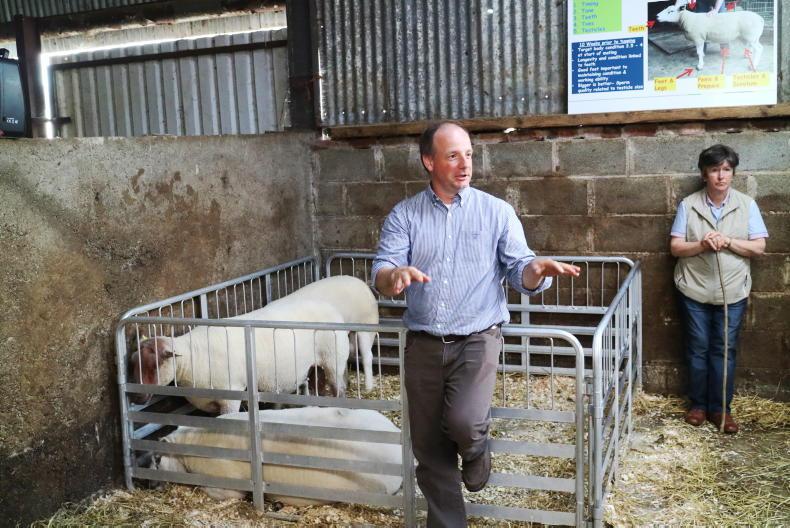


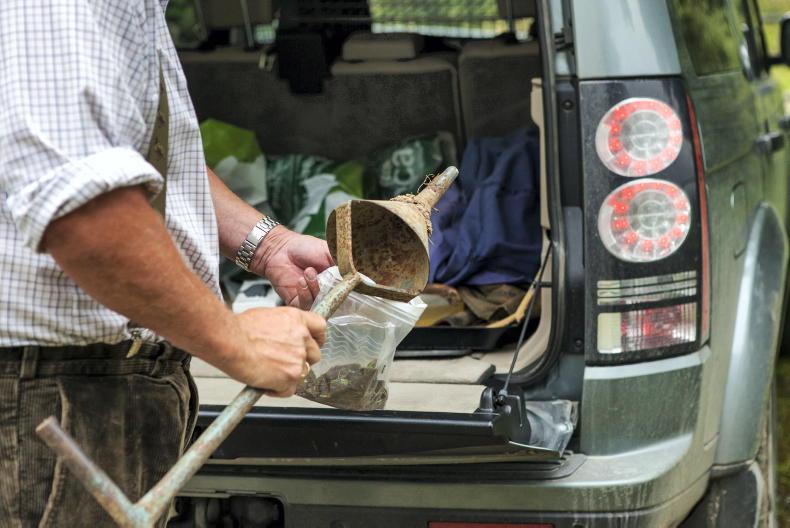
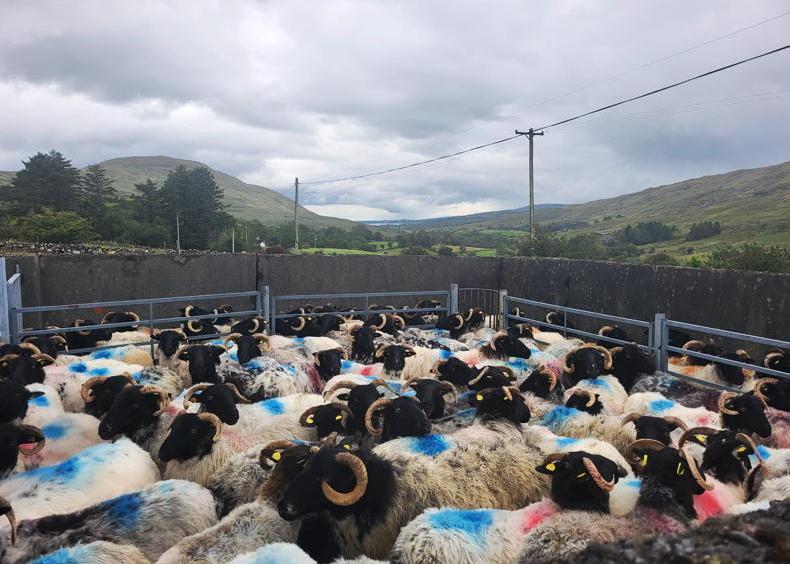
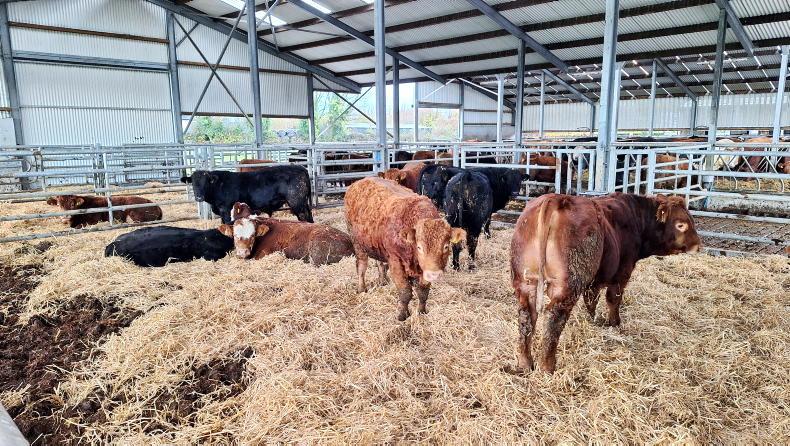
SHARING OPTIONS